Average Of Multiple Columns Sql
SQL (Structured Query Language) is a programming language used for managing and manipulating relational databases. It is widely used by data analysts, database administrators, and software developers to retrieve, update, and process data stored in a database. In SQL, data is organized into tables, and each table consists of rows and columns.
To understand the concept of average in SQL and how to calculate the average of multiple columns, it is important to first grasp the basics of SQL and the concept of columns.
Basics of SQL and the Concept of Columns
SQL allows users to define tables and specify the structure, constraints, and relationships among them. Each table consists of rows, also known as records or tuples, and columns, also known as attributes. The columns represent the different properties or characteristics of the data stored in the table.
For example, let’s consider a table named “Employees” with columns such as “EmployeeID,” “Name,” “Age,” “Salary,” and “Department.” Here, “EmployeeID” and “Name” are columns that store the unique identifier and name of each employee, respectively. “Age,” “Salary,” and “Department” are columns that store the age, salary, and department of each employee, respectively.
Understanding the Term “Average” in SQL
In SQL, the term “average” refers to the arithmetic mean of a set of values. It is calculated by summing up all the values in a column and dividing the sum by the number of values. This is a common statistical measure used to analyze data and obtain insights.
Calculating the Average of Multiple Columns in SQL
To calculate the average of multiple columns in SQL, you can use aggregate functions. Aggregate functions are built-in SQL functions that perform calculations on a set of values and return a single value as the result.
Applying Aggregate Functions to Calculate Column Averages
The AVG function is a commonly used aggregate function in SQL that calculates the average of a set of values. It takes a column or an expression as its argument and returns the average value.
For example, to calculate the average salary of employees in the “Employees” table, you can use the following SQL query:
SELECT AVG(Salary) FROM Employees;
This query will return the average salary as a single value.
Handling NULL Values When Calculating Column Averages
NULL values are special values in SQL that represent the absence of data or unknown values. When calculating the average of multiple columns in SQL, it is important to handle NULL values appropriately.
By default, the AVG function in SQL ignores NULL values and calculates the average based on the non-NULL values in the column. If you want to include NULL values in the calculation, you can use the COALESCE function to replace NULL values with a specific value before applying the AVG function.
Using the AVG Function in SQL to Calculate Column Averages
The AVG function in SQL is used to calculate the average of a column or an expression. It can be used with the SELECT statement to retrieve the average value of a specific column from a table.
For example, to calculate the average of the “Salary” and “Age” columns in the “Employees” table, you can use the following SQL query:
SELECT AVG(Salary), AVG(Age) FROM Employees;
This query will return the average salary and average age as separate values.
Examples of Calculating Average of Multiple Columns in SQL
Here are some examples of calculating the average of multiple columns in SQL:
1. Calculate the average of the “Quantity” and “Price” columns in the “Products” table:
SELECT AVG(Quantity), AVG(Price) FROM Products;
2. Calculate the average of the “Marks1” and “Marks2” columns in the “Students” table:
SELECT AVG(Marks1), AVG(Marks2) FROM Students;
Benefits of Calculating Average of Multiple Columns in SQL
Calculating the average of multiple columns in SQL can provide valuable insights into your data. Here are some benefits of calculating the average of multiple columns in SQL:
1. Data Analysis: Calculating the average of multiple columns allows you to analyze and compare different attributes or measurements in your data.
2. Performance Measurement: It helps in measuring the performance or efficiency of certain aspects of your business or system.
3. Trend Analysis: By calculating the average over a period of time, you can observe trends and patterns in your data.
4. Decision Making: The average of multiple columns can be used as a basis for making informed decisions or setting benchmarks.
FAQs
Q1. How can I calculate the average of 2 columns in SQL?
To calculate the average of 2 columns in SQL, you need to use the AVG function twice, once for each column. For example:
SELECT AVG(Column1), AVG(Column2) FROM Table;
Q2. How can I round the average calculated in SQL?
To round the average calculated in SQL, you can use the ROUND function. For example, to round the average to 2 decimal places:
SELECT ROUND(AVG(Column), 2) FROM Table;
Q3. How can I calculate the average of multiple rows in SQL?
To calculate the average of multiple rows in SQL, you can use the AVG function with the GROUP BY clause. This groups the rows based on a specific column and calculates the average for each group. For example:
SELECT Category, AVG(Price) FROM Products GROUP BY Category;
Q4. How can I select the maximum value from multiple columns in SQL?
To select the maximum value from multiple columns in SQL, you can use the MAX function. For example:
SELECT MAX(Column1, Column2) FROM Table;
Q5. How can I sum two columns in SQL?
To sum two columns in SQL, you can use the + operator. For example:
SELECT Column1 + Column2 FROM Table;
Q6. How can I find the average value in SQL?
To find the average value in SQL, you can use the AVG function. For example:
SELECT AVG(Column) FROM Table;
Q7. How can I use the AVG function with the GROUP BY clause in SQL?
To use the AVG function with the GROUP BY clause in SQL, you need to specify the column you want to group by. For example:
SELECT Category, AVG(Price) FROM Products GROUP BY Category;
Q8. How can I calculate the average of all columns in SQL?
To calculate the average of all columns in SQL, you need to specify the column names explicitly in the AVG function. For example:
SELECT AVG(Column1), AVG(Column2), AVG(Column3) FROM Table;
In conclusion, calculating the average of multiple columns in SQL is a powerful feature that allows you to analyze and gain insights from your data. By using aggregate functions like AVG, you can easily calculate the average of multiple columns and make informed decisions based on the results.
Keywords: Average of 2 columns in SQL, ROUND(AVG SQL), SQL calculate average of multiple rows, SELECT MAX multiple columns, Sum 2 column SQL, Find average value in SQL, SQL AVG GROUP BY, Sum all column SQL, average of multiple columns SQL.
Mssql – Sqlserver – How To Calculate Average Of Multiple Columns
How To Calculate Average Of Multiple Columns In Mysql?
MySQL is a popular open-source relational database management system widely used for various applications. When working with large datasets, it is often required to calculate the average of multiple columns to derive meaningful insights or perform further analysis. In this article, we will discuss different methods to calculate the average of multiple columns in MySQL, along with some commonly asked questions regarding this topic.
Calculating the average of multiple columns allows you to determine the average value across all the columns or select specific columns for analysis.
Method 1: Using the AVG() Function
The AVG() function in MySQL automatically computes the average of a column specified as an argument. By using this function multiple times, you can calculate the average of multiple columns.
Consider the following example:
SELECT AVG(column1), AVG(column2), AVG(column3) FROM table_name;
In this query, we use the AVG() function three times, each with a different column name. This statement will calculate the average of each specified column and return the result.
Method 2: Using the SUM() and COUNT() Functions
Another approach to calculating the average of multiple columns is by utilizing the SUM() and COUNT() functions together. This method can be useful when you need to apply certain conditions or filters to your calculations.
The SUM() function returns the sum of all values in a column, while the COUNT() function returns the total number of rows. By dividing the sum by the count, we can obtain the average.
Consider the following example:
SELECT SUM(column1)/COUNT(column1) AS avg_column1,
SUM(column2)/COUNT(column2) AS avg_column2,
SUM(column3)/COUNT(column3) AS avg_column3
FROM table_name;
In this query, we calculate the sum of each specified column and then divide it by the count of rows in that column. The result is then assigned an alias using the AS keyword for better readability.
Method 3: Using the UNION Operator
The UNION operator allows you to combine the results of multiple SELECT statements into a single result set. By utilizing this operator, you can calculate the average of multiple columns by joining different averages from each column.
Consider the following example:
SELECT AVG(column1) AS avg_column1
FROM table_name
UNION
SELECT AVG(column2) AS avg_column2
FROM table_name
UNION
SELECT AVG(column3) AS avg_column3
FROM table_name;
In this query, we use the UNION operator to combine three different SELECT statements, each calculating the average of a specific column. The result will include separate rows for each average.
FAQs:
Q: Can I calculate the average of only specific rows in a column?
A: Yes, you can calculate the average of specific rows by adding a WHERE clause to your query. For example, `SELECT AVG(column1) FROM table_name WHERE condition;` will calculate the average of column1 where the condition is met.
Q: Which method should I use to calculate the average of multiple columns?
A: The method you choose depends on your specific requirements and the complexity of your calculations. The AVG() function is the simplest and most straightforward method, while the SUM() and COUNT() functions offer more flexibility. The UNION operator is best suited when you want to calculate and compare averages separately.
Q: Can I calculate the average of multiple columns with different data types?
A: Yes, MySQL supports working with different data types. You can calculate the average of multiple columns regardless of their data types, as long as they can be converted or casted to a suitable numeric type.
Q: How can I round the average to a specific number of decimal places?
A: You can use the ROUND() function to round the average to a specific number of decimal places. For example, `SELECT ROUND(AVG(column1), 2) FROM table_name;` will round the average of column1 to two decimal places.
In conclusion, calculating the average of multiple columns in MySQL allows you to gain insights from your data and perform further analysis. By using the AVG() function, SUM() and COUNT() functions, or the UNION operator, you can easily derive the average values you need. The chosen method depends on your specific requirements, data complexity, and desired level of flexibility. By applying these techniques, you will be better equipped to analyze your data effectively and make informed decisions.
How To Use Max Function For Multiple Columns In Sql?
SQL, or Structured Query Language, is a powerful tool used for managing and manipulating relational databases. One of the fundamental functions in SQL is the max function, which helps to find the highest value within a column. While using the max function for a single column is a common practice, many SQL users are often unsure about how to use it for multiple columns. In this article, we will explore the concept in depth and discuss various scenarios and techniques for utilizing the max function on multiple columns.
Understanding the Max Function in SQL
Before delving into the intricacies of using the max function on multiple columns, let’s first understand the basics of the max function. The max function returns the maximum value from a specified column in a table. It is often used in combination with the SELECT statement to fetch specific data from the table.
For example, consider a table named “employees” with columns like “employee_id,” “name,” and “salary.” To find the highest salary from this table, one can use the max function like this:
SELECT MAX(salary) FROM employees;
This query will return the maximum salary present in the “salary” column of the “employees” table.
Using Max Function for Multiple Columns
To find the maximum value from multiple columns, we need to modify the query slightly. Instead of specifying only one column in the max function, we need to include multiple columns separated by commas.
For instance, if we have a table called “products” with columns like “product_id,” “name,” and “price,” and we want to determine the highest price in the “price” column, we can use the following query:
SELECT MAX(price) FROM products;
However, if we wish to find the maximum price along with the corresponding product name, we need to include the “name” column as well, as shown below:
SELECT MAX(price), name FROM products;
In this query, the max function fetches the highest price, while the “name” column ensures that the corresponding product name is also included in the result set.
Handling NULL Values
When using the max function on multiple columns, it’s vital to be aware of the presence of NULL values. If any of the columns under consideration contain a NULL value, the max function may return NULL as the maximum value.
To prevent this, we can use the COALESCE function, which substitutes NULL values with an alternative value. For instance, suppose our “products” table has a column called “discount” that occasionally contains NULL values, and we want to find the highest discount. We can apply the COALESCE function as follows:
SELECT MAX(COALESCE(discount, 0)) FROM products;
In this query, the COALESCE function ensures that any NULL values in the “discount” column are replaced with 0, guaranteeing a valid result even when NULL values are present.
Using Aliases for Readability
When working with multiple columns, using aliases can greatly improve the readability of queries. Aliases provide alternative names for columns or expressions in the result set, making it easier to understand the data presented.
To assign aliases to columns while using the max function, we can utilize the AS keyword followed by the desired alias name. For example:
SELECT MAX(price) AS max_price, name AS product_name FROM products;
In this query, the max function is assigned the alias “max_price,” while the “name” column is given the alias “product_name.” These aliases can then be used to refer to the respective columns in subsequent parts of the query or in application code.
FAQs
1. Can I use the max function on multiple columns of different data types?
Yes, the max function in SQL can be used on multiple columns with different data types. However, remember that the result will only reflect the maximum value within each specific column.
2. Is it possible to use the max function on more than two columns?
Yes, the max function can be used on any number of columns. Simply separate the columns with commas within the max function.
3. How can I find the maximum value across all columns in a table?
To find the maximum value across all columns in a table, you can use nested max functions within a single query. For example:
SELECT MAX(MAX(column1), MAX(column2), MAX(column3)) FROM my_table;
This query will return the highest value found among all the specified columns.
In conclusion, using the max function for multiple columns in SQL simply requires specifying the desired columns separated by commas. By understanding how to handle NULL values, using aliases for readability, and employing nested max functions, you can effectively utilize this function’s potential in your SQL queries. Explore and experiment with the max function in combination with other powerful SQL statements to unlock even more advanced data analysis capabilities.
Keywords searched by users: average of multiple columns sql Average of 2 columns in SQL, ROUND(AVG SQL), SQL calculate average of multiple rows, SELECT MAX multiple columns, Sum 2 column sql, Find average value in SQL, SQL AVG GROUP BY, Sum all column SQL
Categories: Top 31 Average Of Multiple Columns Sql
See more here: nhanvietluanvan.com
Average Of 2 Columns In Sql
Structured Query Language (SQL) is a powerful tool used to manage and manipulate data in relational databases. One common task in SQL is to perform calculations on data, such as finding the average value of a set of numbers. In this article, we will explore how to calculate the average of two columns in SQL and discuss some practical applications. Additionally, a FAQs section will address common queries regarding this topic.
Calculating the average of two columns in SQL is relatively straightforward. Let’s consider a hypothetical scenario where we have a database table named “Sales” with two columns: “Quantity” and “Price”. The “Quantity” column stores the number of units sold, while the “Price” column stores the corresponding price per unit. To find the average price per unit, we can execute the following SQL query:
“`sql
SELECT AVG(Price) FROM Sales;
“`
This query, when executed, will calculate the average of all the values in the “Price” column. However, if we want to calculate the average of the product of the two columns, we can modify the query as follows:
“`sql
SELECT AVG(Quantity * Price) FROM Sales;
“`
In this case, the query will calculate the average of the total revenue generated by multiplying the “Quantity” and “Price” columns for each row.
It is worth noting that the AVG function in SQL automatically handles NULL values by excluding them from the calculation. So, if there are any NULL values in either the “Quantity” or “Price” column, they won’t affect the result. However, it is essential to ensure data integrity by properly handling and validating NULL values in the columns.
The average of two columns in SQL finds use in various scenarios. One common application is in financial calculations, where we want to determine the average price or revenue generated over a specific period. For instance, a retail business can use this calculation to analyze the average purchase price of products over a month or year. This information can help the business in setting competitive prices and analyzing revenue trends.
Another use case is in the field of data analysis. SQL is often utilized in extracting insights from large datasets, and calculating the average of two columns can help understand relationships between different variables. For example, a healthcare provider can find the average cost per procedure by multiplying the number of procedures (stored in the “Quantity” column) by their respective costs (stored in the “Price” column).
FAQs:
Q1. Can I calculate the average of two columns from different tables?
A1. Yes, you can calculate the average of two columns from different tables by using SQL joins. Simply join the required tables based on a common key and then perform the average calculation on the desired columns.
Q2. How can I round the average result to a specific number of decimal places?
A2. SQL provides the ROUND function to round numeric values. You can use this function to round the average result to a specific number of decimal places. For example, to round the average to two decimal places, you can modify the query as follows:
“`sql
SELECT ROUND(AVG(Price), 2) FROM Sales;
“`
Q3. What if I want to calculate the average of two columns for a specific subset of data?
A3. To calculate the average of two columns for a specific subset of data, you can use the WHERE clause in your SQL query. This clause allows you to specify conditions based on which the average calculation will be performed.
In conclusion, the average of two columns in SQL can be easily calculated using the AVG function and appropriate column selection. This calculation finds extensive use in various industries, aiding in financial analysis, data analysis, and decision-making processes. By understanding the fundamentals of this calculation, SQL users can leverage its potential to derive valuable insights from their database systems.
Round(Avg Sql)
SQL, or Structured Query Language, is a powerful tool used to interact with databases. It provides a wide range of functions to manipulate and analyze data. One such function is ROUND(AVG), which allows users to perform mathematical operations on average values. In this article, we will delve into the details of ROUND(AVG SQL) and explore its functionality, usage, and benefits. So, let’s dive right in!
Understanding ROUND(AVG SQL):
The ROUND() function in SQL is used to round a numeric value to a specified precision or the nearest whole number. On the other hand, the AVG() function calculates the average value of a column containing numeric data. When these two functions are combined, we have ROUND(AVG), which can be used to calculate the average value with a desired level of precision.
Syntax:
SELECT ROUND(AVG(column_name), decimal_places) FROM table_name;
The ROUND() function takes two arguments. The first argument is AVG(column_name), where column_name represents the column from which we want to calculate the average. The second argument, decimal_places, allows us to specify the number of decimal places to round the average value to.
Example:
Let’s consider a simple example. Assume we have a table named Sales with a column named revenue. We want to calculate the average revenue rounded to two decimal places. The SQL query would look like this:
SELECT ROUND(AVG(revenue), 2) FROM Sales;
This query will return the average revenue rounded to two decimal places.
Benefits and Applications:
1. Precision: The ROUND(AVG SQL) function enables us to control the precision of the average value. By specifying the number of decimal places, we can obtain a more precise result tailored to our needs.
2. Data Presentation: When presenting average values in reports or dashboards, rounding them to a certain decimal place enhances readability. ROUND(AVG SQL) allows users to present average figures in a more concise manner, making it easier for stakeholders to comprehend the data.
3. Comparative Analysis: Average values provide a useful metric for understanding overall trends. By rounding the average values to a specific precision, we can make meaningful comparisons across different data sets, ensuring a fair evaluation.
4. Simplified Queries: Instead of calculating the average value and then using a separate function to round it, ROUND(AVG SQL) allows users to perform both operations in one go. This reduces the complexity of the query and makes it more efficient.
FAQs:
Q1. What data types can ROUND(AVG SQL) function work with?
The ROUND(AVG SQL) function can work with any numeric data types such as INT, BIGINT, FLOAT, DECIMAL, and NUMERIC.
Q2. Can I use ROUND(AVG SQL) with multiple columns?
Yes, ROUND(AVG SQL) can be used with multiple columns. Simply specify the column names separated by commas within the AVG() function.
Q3. How does the ROUND(AVG SQL) function handle NULL values in a column?
The ROUND(AVG SQL) function ignores NULL values when calculating the average. It only considers non-NULL values for the calculation.
Q4. Can I use a negative value for decimal_places in ROUND(AVG SQL)?
Yes, you can use a negative value for decimal_places. For example, if you want to round the average value to the nearest thousand, you can use ROUND(AVG(column_name), -3). This will round the average value to the nearest thousand.
Q5. Are there any alternatives to ROUND(AVG SQL)?
Yes, there are alternative methods to round the average value, such as using the CAST() function or formatting the output in the application layer. However, ROUND(AVG SQL) offers a more streamlined and efficient approach.
Conclusion:
The ROUND(AVG SQL) function is a valuable tool for calculating and rounding average values in SQL queries. It allows users to control the precision of the average value and tailor it to their requirements. Whether for data analysis, reporting, or comparative analysis, ROUND(AVG SQL) simplifies the process of calculating and presenting average values. Understanding its syntax, benefits, and applications empowers SQL users to harness its functionality and make the most of their data analysis endeavors.
Sql Calculate Average Of Multiple Rows
Structured Query Language, or SQL, is a programming language designed for managing and manipulating relational databases. One of its powerful features is the ability to calculate the average of multiple rows. In this article, we will delve into the various ways SQL allows us to compute the average of multiple rows. We will also address some frequently asked questions related to this topic.
Calculating the average of multiple rows is a common requirement in data analysis and reporting. Whether you are working with financial data, customer feedback ratings, or product reviews, the ability to determine the average value can provide valuable insights. SQL offers several ways to achieve this, depending on the specific requirements of your task.
To calculate the average of multiple rows, we can employ the AVG() function, which is a built-in aggregate function in SQL. This function takes a column or expression as an argument and returns the average of the values in that column. Here is a basic example of how we can use the AVG() function:
“`sql
SELECT AVG(salary) AS average_salary
FROM employees;
“`
In the above example, we are calculating the average salary from the “employees” table. The AVG() function processes all the rows in the specified column and returns a single result, which we assign to the alias “average_salary” for better readability. This is a simple and effective way to calculate the average of multiple rows.
Additionally, we can apply the AVG() function with a GROUP BY clause to calculate the average value for each group within a column. Let’s consider a practical scenario with a “sales” table that includes columns such as “region” and “revenue.” Here’s an example:
“`sql
SELECT region, AVG(revenue) AS average_revenue
FROM sales
GROUP BY region;
“`
By using the GROUP BY clause, we can calculate the average revenue for each region separately. This is particularly useful when you need to analyze data across different categories or groups. The resulting output will provide a clear picture of the average revenue per region.
Another way to calculate the average of multiple rows is by using subqueries. Subqueries allow us to nest one query within another, enabling us to perform calculations on subsets of data. In this approach, we can calculate the average of the subquery and retrieve its result. Let’s illustrate this with an example:
“`sql
SELECT (SELECT AVG(price) FROM products) AS average_price;
“`
In the above example, we calculate the average price of all products in the “products” table using a subquery. The subquery, enclosed within parentheses, computes the average price, which is subsequently selected as the alias “average_price.” This technique can come in handy when you want to calculate the average of a particular subset of data.
FAQs
Q: Can I calculate the average of multiple columns in a single SQL query?
A: Yes, you can. SQL allows you to apply the AVG() function to multiple columns, which will compute their respective averages in a single query.
Q: Can I exclude certain rows from the calculation?
A: Definitely! You can include a WHERE clause in your SQL query to apply specific conditions and exclude unwanted rows from the average calculation.
Q: What if I encounter NULL values in the column?
A: When computing averages, NULL values are typically treated as zeroes. However, some database systems offer a different behavior. To handle NULL values in a customized way, you can use the ISNULL() or COALESCE() functions to replace them with a desired default value before performing the average calculation.
Q: What happens if there are no rows in the table I am calculating the average from?
A: In such cases, the AVG() function will return NULL. You can handle this by using the ISNULL() or COALESCE() functions to replace the NULL value with an appropriate default value.
Q: Are there any performance considerations when calculating averages of multiple rows?
A: When dealing with large datasets, calculating averages can be computationally expensive. To optimize performance, consider indexing relevant columns and properly structuring your queries.
In conclusion, SQL offers various methods to calculate the average of multiple rows based on your specific needs. The AVG() function, combined with the GROUP BY clause or subqueries, empowers data analysts and developers to efficiently perform average calculations on their database records. Remember to consider the FAQs section for answers to common questions and to optimize performance for larger datasets.
Images related to the topic average of multiple columns sql

Found 16 images related to average of multiple columns sql theme








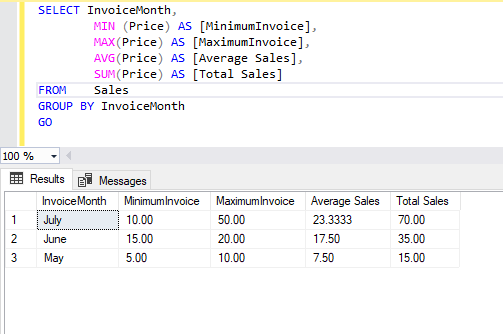


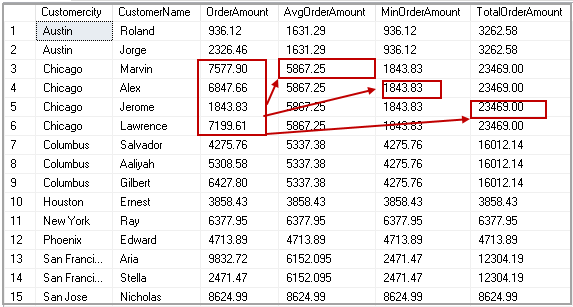


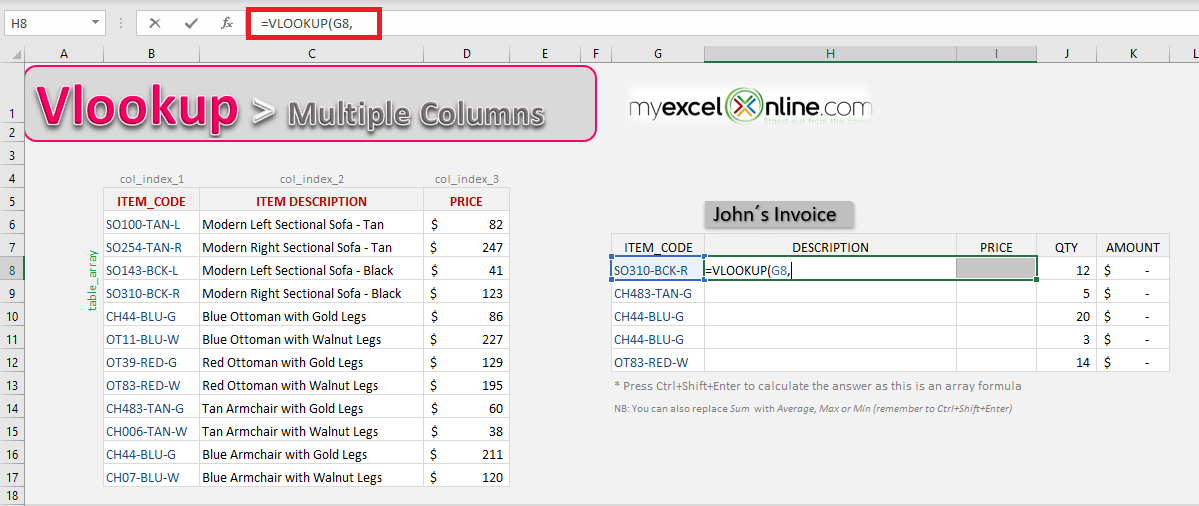


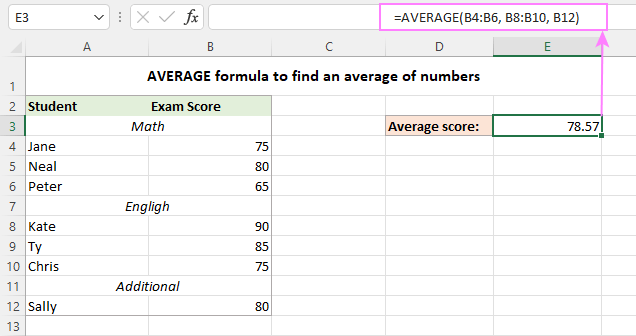
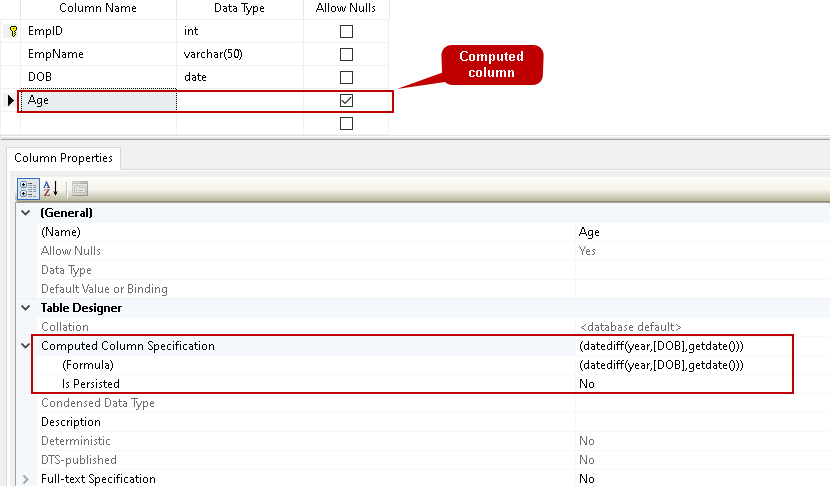

.png)

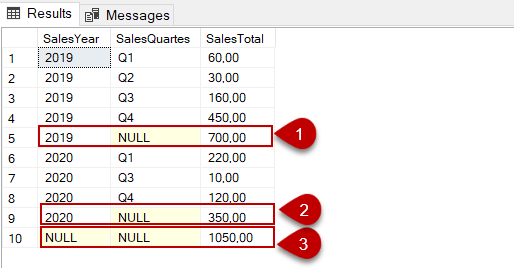



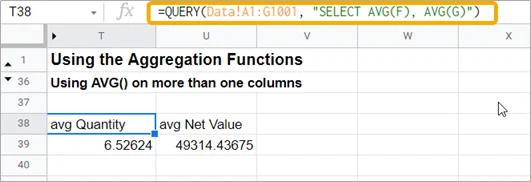

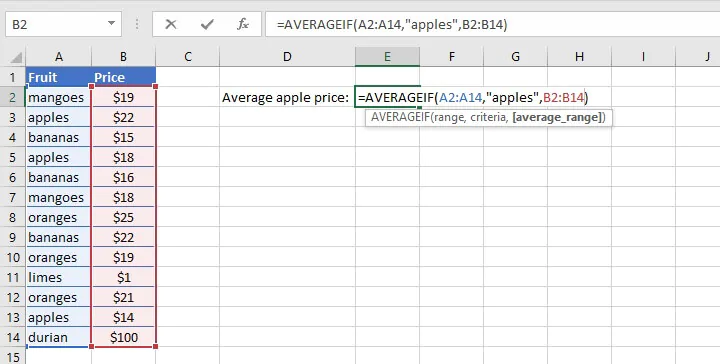


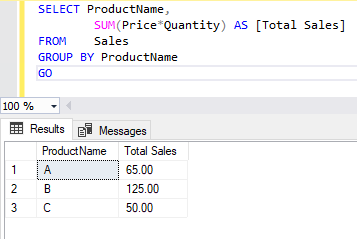





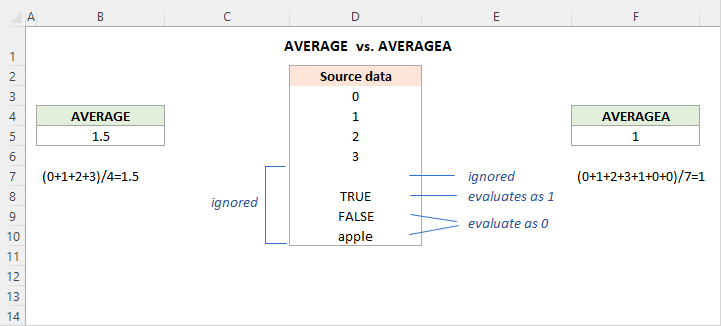











Article link: average of multiple columns sql.
Learn more about the topic average of multiple columns sql.
- Average of multiple columns – sql – Stack Overflow
- How to Calculate Average Across Multiple Columns (SQL)
- What is the average of two columns in SQL? – Quora
- Find the average of two combined columns in sql – Stack Overflow
- Get the Maximum Value across Columns – Navicat
- Group by Multiple Columns in SQL – Scaler Topics
- Calculating average value of multiple columns
- Obtaining the average of three columns per row in SQL
- 5 use cases of SQL Average
- How to Find the Average of a Numeric Column in SQL
- How to calculate average from multiple columns
- MS SQL Server – average value for grouped rows – Dirask
See more: https://nhanvietluanvan.com/luat-hoc